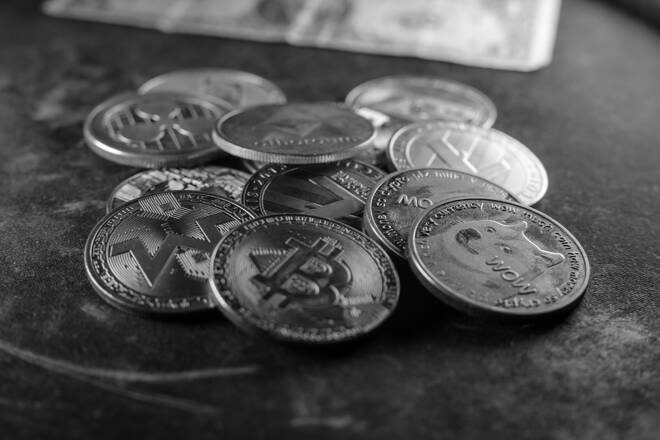Advertisement
Advertisement
DappRadar and LayerZero Launch Industry’s First Cross-chain Token Staking
By:
DappRadar has launched a new cross-chain token staking mechanism that minimises fees related to staking
Key Insights:
- RADAR enables cross-chain staking across multiple blockchains and Ethereum Virtual Machine-compatible networks.
- The new mechanism is expected to minimize fees.
- The functionality for the RADAR token is provided through a set of smart contracts.
The decentralized application exploration platform DappRadar has launched a new RADAR token to enable cross-chain staking across multiple blockchains and Ethereum Virtual Machine (EVM)-compatible networks in partnership with LayerZero.
This is expected to minimise fees drastically and increase access to staking opportunities.
RADAR Token
A standout feature of the new token is that it ensures the community won’t be limited to only EVM-compatible chains since cross-chain staking will be enabled for every blockchain that RADAR launches on.
A by-product of this is that it will streamline user experience across all chains.
The functionality for the RADAR token is provided through a set of smart contracts. It works as such; one of the contracts is known as the controller and the other as a proxy, with both working together to enable the new staking mechanism.
A smart contract is a term used to describe computer code that automatically executes all or parts of an agreement and is stored on a blockchain-based platform.
Notably, requests made to withdraw or claim rewards are sent to the proxy smart contract which determines, through communication with the controller, if the request is valid. Once a request is approved as valid, the controller instructs the proxy to release the tokens. According to DappRadar, this type of cross-chain staking is an industry first.
Eradication of High Fees
The primary purpose of cross-chain token staking is to remove barriers to entry for cost-conscious users by eradicating high fees. This is achieved by enabling users to earn the same APR for their staked assets across all blockchains so they won’t have to bridge assets themselves.
In addition, users won’t be obliged to pay high Ethereum (ETH) gas fees. Gas fees are payments made by users to compensate for the computing energy required to process and validate transactions on the Ethereum blockchain.
An instructive document provided by DappRadar also proves helpful to participants looking to make use of this new functionality. It details how users can stake their RADAR tokens on the Ethereum blockchain and then claim the rewards on the BNB Chain. These two chains are the first to be supported, with a rollout for Polygon (MATIC) expected in the future.
Overall, the new functionality will improve cross-chain user experience and this is particularly the case for margin-sensitive users in emerging economies.
DappRadar recently published a report showing that macro indicators for games signal bullish momentum in the blockchain gaming ecosystem, as game decentralized applications (dApps) now account for 52% of the total dApp industry activity.
In May, the company, which hosts more than 10,000 dApps from over 30 protocols, debuted a $725 million ecosystem fund raised to expand the Flow ecosystem through boosting gaming, infrastructure and decentralized finance (DeFi).
The fund is backed by investors with large holdings of the network’s native token, FLOW, as well as equity in Dapper Labs itself. They include Andreessen Horowitz (a16z), Coatue, Union Square Ventures, Greenfield One, Liberty City Ventures and CoinFund.
About the Author
Mohadesa Najumiauthor
Mohadesa Najumi is a British writer who has worked within crypto, forex, financial technology, and the stock market industry. Mohadesa received her MSc in Political Science and International Relations at the University of Amsterdam.
Did you find this article useful?
Latest news and analysis
Advertisement
